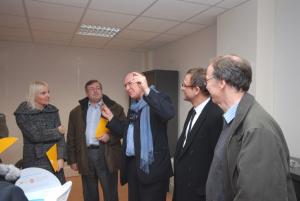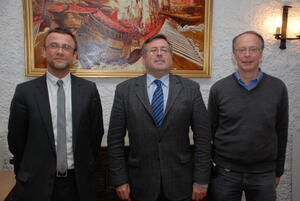Looking back in satisfaction: first review of cooperation between ITER and CERN
Last week saw the third meeting of the CERN-ITER Steering Committee. The committee was set up within the scope of the Cooperation Agreement between the two organizations with the aim of sharing knowledge and information on technologies such as superconductivity, magnet coils and cryogenics.
Since its implementation in 2006 the collaboration has assisted the ITER Organization and the Domestic Agencies on various projects such as preparing technical specifications for the Procurement Arrangements for ITER's toroidal field coils, conducting the tests for the poloidal field insert coil in Naka, Japan, and the development of high temperature superconductor (HTS) current leads together with the Chinese Domestic Agency.
"Looking back, the year 2008 has been very successful," summarized Arnaud Devred, Section Leader for the Superconductor Systems & Auxiliaries Section, together with Neil Mitchell, Head of the Magnet Division, and the ITER representatives on the Steering Committee. "Six out of seven tasks defined last year have been completed. All except instrumentation were finished."
One example that proves that this cooperation is more than a paper agreement is the fact that CERN staff witnessed the poloidal field insert tests in Naka, explains Neil Mitchell. "Experts from CERN assisted us to define the requirements and finally run the tests in the Japanese test facility."
"Working for fusion is not within our mandate, although links always existed between fusion and high-energy physics, and the LHC benefitted from Tore Supra's experience 20 years ago," explains Philippe Lebrun, Head of the Accelerator Technology Department in CERN. "But this cooperation is about transferring and sharing technology. CERN is a model for international cooperation and we do have some experience in how to share technology and development across the globe. We do not have to invent the wheel twice."



